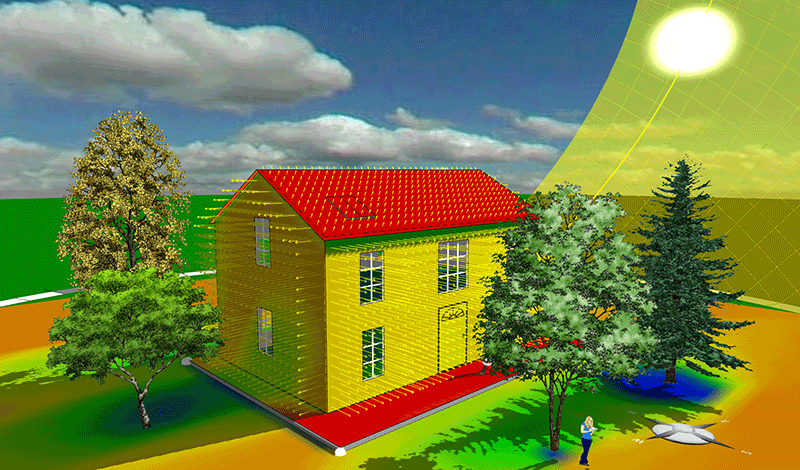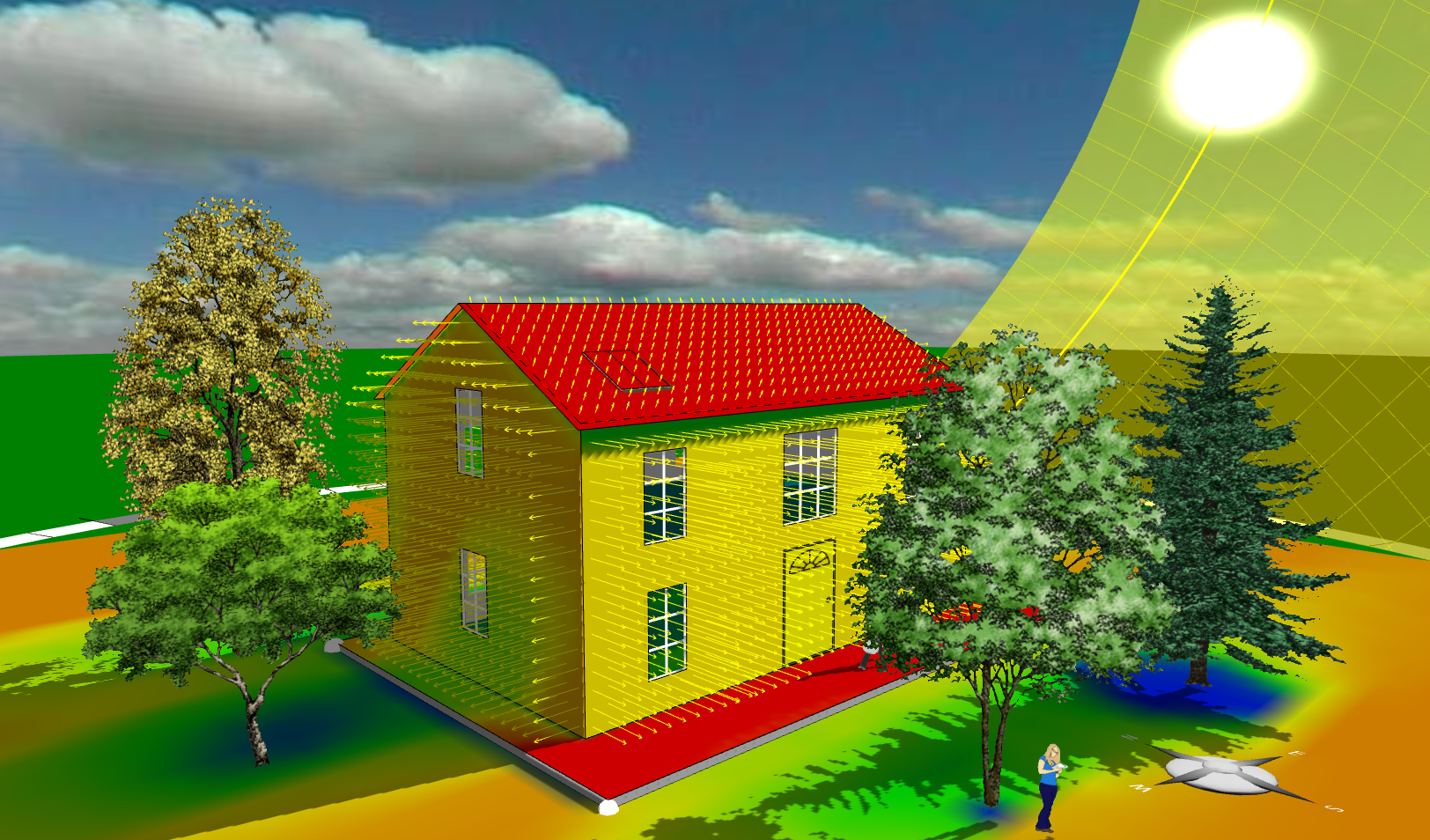Monday’s Lesson: Designing an Energy-Plus Home
Are you looking for high school engineering design projects that meet the requirements of the Next Generation Science Standards (NGSS)? Do you need free, high-quality software and curricula that engage students in solving complex real-world problems like scientists and engineers and yet can be easily implemented? Do you want students to be more technically prepared to tackle energy and environmental issues in the future? If you answered “yes” to these questions, this lesson is for you.
Energy3D is a simplified CAD program for designing buildings and communities that take advantage of renewable energy sources such as solar and geothermal energy to reduce fossil fuel use. Based on weather data of more than 200 worldwide locations, Energy3D allows students around the world to design sustainable architectural and solar solutions for their climates.
Unlike other CAD tools, Energy3D aims to engage students in science and engineering practices required by NGSS. The integrated capability of concurrent design, simulation, and analysis within Energy3D enables students to test and evaluate multiple design ideas through rapid virtual experimentation.


The Energy-Plus Home Design Challenge
Challenge your students to use Energy3D to design an energy-efficient house that, over the course of a year, produces more renewable energy than the energy needed for heating and cooling. In addition to this goal, students must also meet a set of design criteria and constraints. For example, the house should have one of three specified architectural styles, the size cannot be too big or too small, and the cost must not exceed the budget.
Energy3D’s easy-to-use interface allows students to quickly sketch up realistic-looking houses using a basic set of design elements, including walls, roofs, windows, solar panels, and trees (Figure 1). Students can adjust the properties of each element such as size, location, orientation, U-value, solar heat gain coefficient, heat capacity, color, and more. Whenever they want to evaluate the effect of a change on the energy performance of the house under design, they can run the built-in thermal and solar simulators to generate a graph that itemizes and summarizes daily or annual energy use (Figure 2).
This design project meets the NGSS engineering standards in several ways: 1) it is a direct response to HS-ETS1-4 that requires students to use a computer simulation to model and solve real-world problems, 2) it promotes systems thinking as students can explore how individual elements collectively contribute to the overall performance of a house, and 3) it creates many opportunities for learning about trade-offs and optimizations as the built-in simulators greatly accelerate the feedback loop necessary for iterations.
Although the engineering projects based on Energy3D are limited to virtual design, they have distinct advantages:
1) students have the opportunity to learn CAD, as nearly every engineer does today, 2) software can simulate situations that are not possible to create in a school lab (e.g., waiting for a year to determine the annual energy use of a real house), and 3) the cost of implementing these projects is minimal—you only need computers that can run the free Energy3D software.
Charles Xie (qxie@concord.org) co-developed Energy3D.
Saeid Nourian (snourian@concord.org) co-developed Energy3D.
This material is based upon work supported by the National Science Foundation under grant DUE-1304485. Any opinions, findings, and conclusions or recommendations expressed in this material are those of the author(s) and do not necessarily reflect the views of the National Science Foundation.

